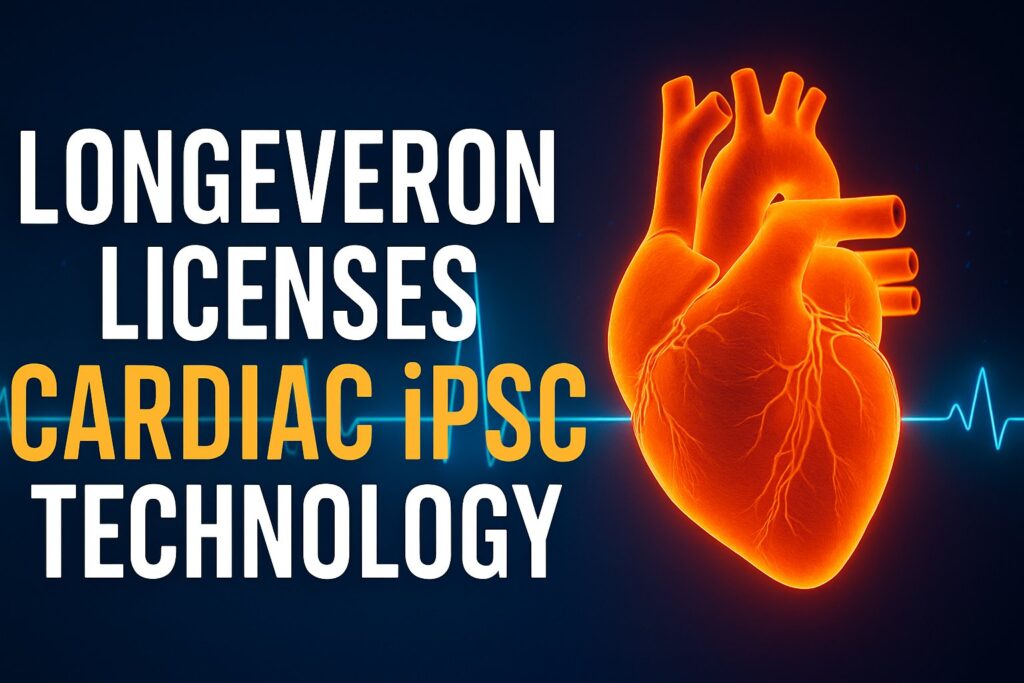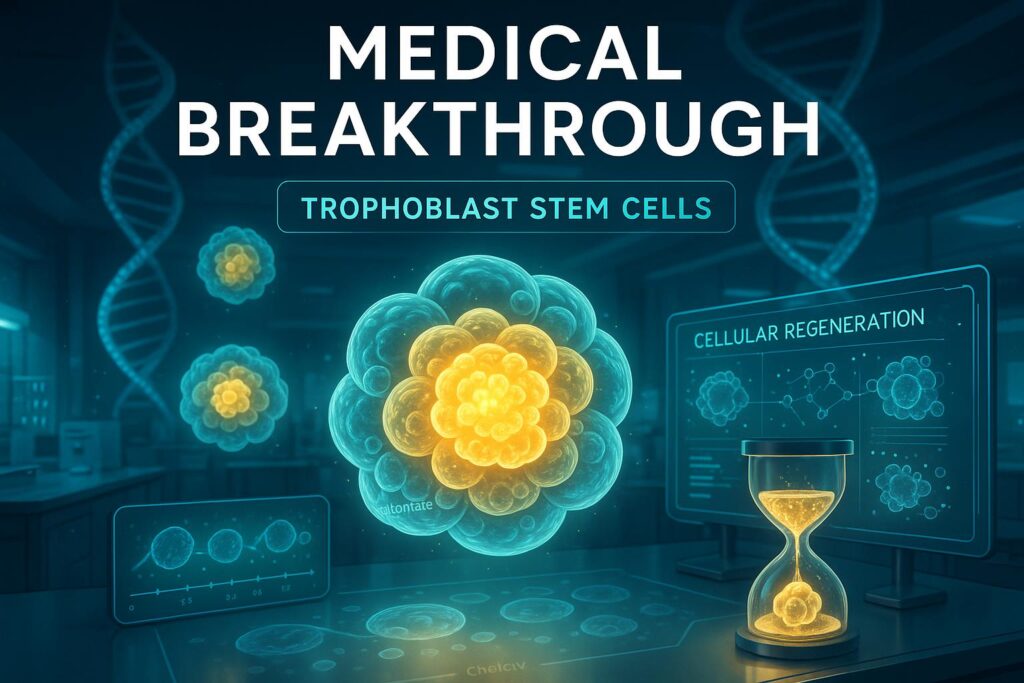At this very moment, research is being done on Charcot-Marie-Tooth disease type 1A.
Esther is a leading researcher in this field and will tell you more about how cancer and other global diseases can be cured using this new technique. Esther uses stem cells in anticancer therapy and as a model to study Charcot-Marie-Tooth disease type 1A.
Esther will talk about how stem cells will change the future of our healthcare and the significant implications it will have in the long run. This talk was given at a TEDx event using the TED conference format but independently organized by a local community.
Video Transcript:
[Music] Everyone knows at least one person who suffers from a severe illness such as Parkinson’s disease, stroke, diabetes, or cancer.
A number of severe diseases are still poorly understood and often there is no efficient therapy.
Today I want to talk about something that will shape the future of medicine. Stem cells.
Stem cell research has been a growing area of research in the past decades and has become one of the most promising areas in modern medicine.
Stem cells will contribute to the development of therapies for many diseases, and will help in saving the lives of millions of people in the future.
My name is Esther Wolfs and I’ve always been fascinated by stem cells. So since the very start of my career as a researcher, I started doing stem cell research because I wanted to know what we could do with these cells and how we could use them to cure diseases.
And in my research group we are also studying how we can use stem cells to find a new therapy for different diseases; such as cancer and nerve disease.
Now, what exactly are stem cells?
Our body consists of several organs, such as the brain, the liver, the heart. And each organ has a specific tissues. These tissues are made of specific cells and all of these cells have their own unique function.
After fertilization, the embryo consists of cells that do not have these specific functions yet. These cells are called undifferentiated cells and these cells are stem cells.
So stem cells are cells that do not have their specific function yet and they can still become different types of cells. Such as bone cells, fat cells, or cartilage cells.
Stem cells do not only exist during embryonic development, they are also present after birth and even in the adult body. In fact, stem cells can be seen as the raw material of the body.
They serve as a repair mechanism of the body and they are present in all tissues of the body; in the liver, in fat tissue, in the heart, and even in the center of the tooth.
So imagine there is damage to a given tissue due to disease or injury or natural turnover, and let’s say the liver. In response to this damage the stem cells that are present in the liver, they start to divide and they turn into specialized liver cells. And there they will replace the damaged cells.
So now I’d like you to think of your favorite football player. So now I’d like you to think of your favorite football team. Imagine that your team is playing a great game but somewhere during this game one of the players gets injured and he has to be taken off the field by the medical team.
Well luckily there are a number of substitute players waiting at the side of the field. And one of these substitutes starts warming up and he will eventually enter the field to take the place of this injured player. So in this way the game can be resumed and hopefully your football team wins the game.
Now why is it exactly that stem cells are so important for the future of medicine and what is it that makes these cells so powerful?
For this there are two major reasons. First of all, we can use these cells as a therapy for injuries and diseases. Stem cells, they can be isolated from the human body. We can keep them in a dish in the lab and we can stimulate them in the lab to turn into specialized cell types.
So a lot of research has been done and is still being done by researchers all over the world on finding the right cues to make these cells develop into specific cell types in the body. Such as blood cells, neurons, or liver cells. And in this way we can do something very difficult. We can try to mimic what’s happening within the body, but then in the lab in a dish.
So now think of your favorite football team again and one of the players got injured and he was replaced by a substitute player. But this substitute player is not just a regular ordinary substitute player, this is a very good substitute player because he can replace many different players on the field. He can replace defenders, midfielders, and even the goalkeeper. So he is a very versatile substitute player and this is exactly what stem cells are.
So when these stem cells have developed into specific cell types, we can inject them into a patient and try to cure a given disease. So we could inject neurons in a stroke patient, cardiac cells in a patient suffering from myocardial infarction, or even skin cells in patients with serious or chronic wounds.
And many research groups across the world have now succeeded in turning stem cells into specific cells. Even tissues or mini organs that may be used in the future to cure diseases that remain incurable up until now.
Today stem cells are already being used as a standard therapy for blood related diseases such as leukemia. And what they do is they inject these stem cells in these patients and they will travel to the bone marrow where they will multiply and turn into healthy blood cells.
So next to regenerating lost or damaged tissue, stem cells can be used as an alternative new therapeutic approach in other diseases such as cancer. This is possible because some stem cell types they are known to actively migrate towards tumors and also sites of injury.
So in our research we isolate stem cells from the inner part of the tooth (the dental pulp), and previous research has shown that these cells are also able to travel towards tumors. So we can use them to deliver a new anti-cancer therapy specifically to the tumor cells. And these stem cells we make they can be compared to James Bond.
In every James Bond movie, he has to eliminate a very evil bad guy. So to do so he has to put in a lot of effort. So he travels across the world through different countries and he tries to look for this super villain. And after quite a search he is able to localize his enemy. And he doesn’t have to do the work all by himself.
Q has developed very cool tools that help James Bond in eliminating his enemy. So eventually this makes the world a better place.
So this approach enables us to target the tumor cells and spare as much healthy tissue. And this will significantly reduce the side effects that are currently being experienced by cancer patients receiving systemic chemotherapy.
The second reason why stem cells are important tools for the development of future therapies is because we can use them as a model to study diseases. And to do so we can isolate stem cells from patients suffering from a given disease and we can bring them to the lab, put them in a petri dish and study them.
So we can use these patient-derived stem cells to study what is actually going on in these diseases and using this approach we generate so-called patient and dish models. And because we can study what is happening in these patients, but yet we study this in a culture dish in the lab. And this is very interesting in science overall because we can study diseases very thoroughly yet in a human setting. So thereby we decrease the number of lab animals needed in research. And also this is very interesting and needed because animal models do not always perfectly reflect the human body.
In our lab we are studying Charcot-Marie-Tooth disease type 1A, or CMT1A in short. This is a disease in which nerves are affected. And healthy nerves they are surrounded by a protective layer to enable signals being passed throughout the body which is necessary for movement and sensation.
And you can compare a nerve with an electric wire. On the inside of the wire there is a copper wire, and this represents the nerve itself. This copper wire conducts electricity throughout a building towards different parts enabling machines to work or lights to work properly.
And this copper wire is surrounded by a layer of plastic as insulation and to make sure that signals are conducted properly. So if this layer is damaged, this electric signal is no longer conducted efficiently and signals can be lost.
This is exactly what happens in CMT1A patients. The protective layer surrounding the nerve is damaged and signals are no longer transmitted effectively; leading to deteriorating muscle weakness and patients are even becoming possibly wheelchair bound.
So to date there is no cure for CMT1A. So for the research we are doing in our team we use CMT1A patient-derived stem cells. And dental stem cells also to mimic the disease.
These patients in a dish models are then used to explore what is happening during disease developments and also disease progression. And this will provide us with new insights into the disease and may help us in developing a cure for CMT1A patients.
Using stem cells as a model to study diseases will enable researchers in different research fields to study what is going wrong in disease developments. And these are very important steps in finding the answer to questions that have remained unanswered up until now. And thus the development of new therapies for severe diseases.
To conclude, stem cells are very interesting and powerful cells that can be used as a therapy to replace damaged cells in the body due to disease or injury. So think back to your favorite football team where the substitute player can replace different players at the field.
They can also be used as vehicles to treat diseases such as cancer. Think back to James Bond who receives extra cool gear from Q.
And finally, they can be used to study diseases in so-called patients in a dish models. And a lot of groups around the world have achieved major breakthroughs in stem cell research, but still there are many aspects that are not yet fully understood and left to be discovered.
Therefore stem cell researchers are putting a lot of effort in this exciting field of research. And we should keep on doing so in the future. In this way, stem cells will play a very important role in the development of new therapies for several diseases and they will become even more important in future medicine.
So in the beginning of my talk I mentioned that everybody knows a person with a severe disease. I am convinced that stem cells will contribute to the development of new therapies for these diseases and will contribute to saving lives. Thank you for listening.



